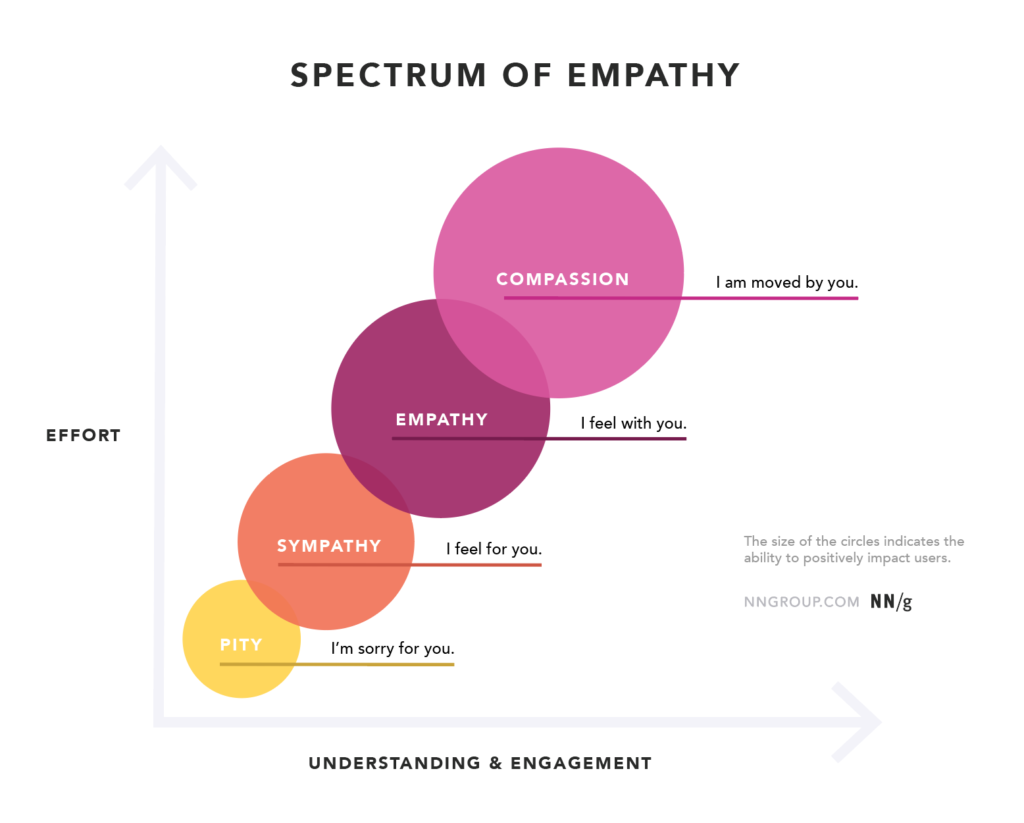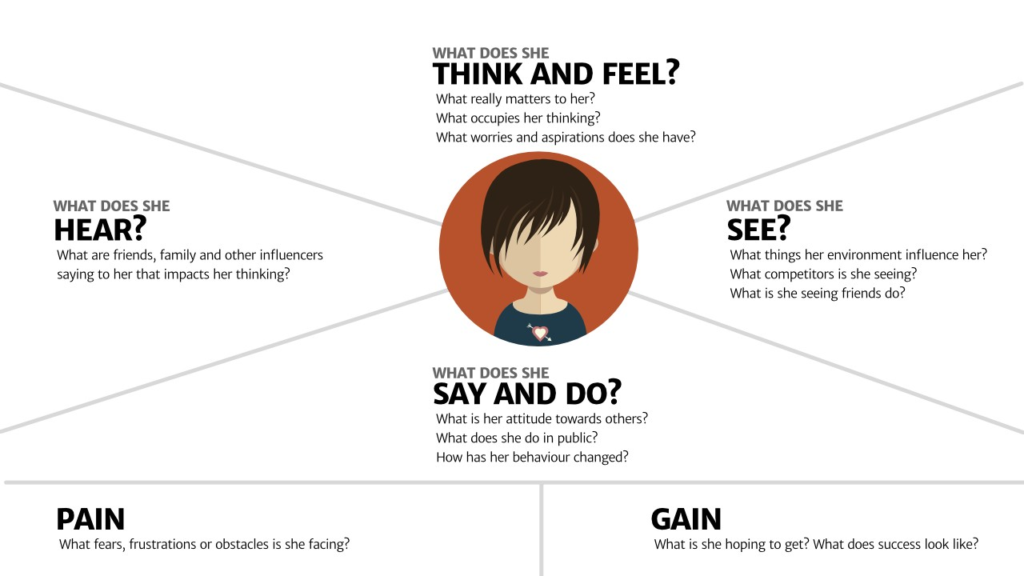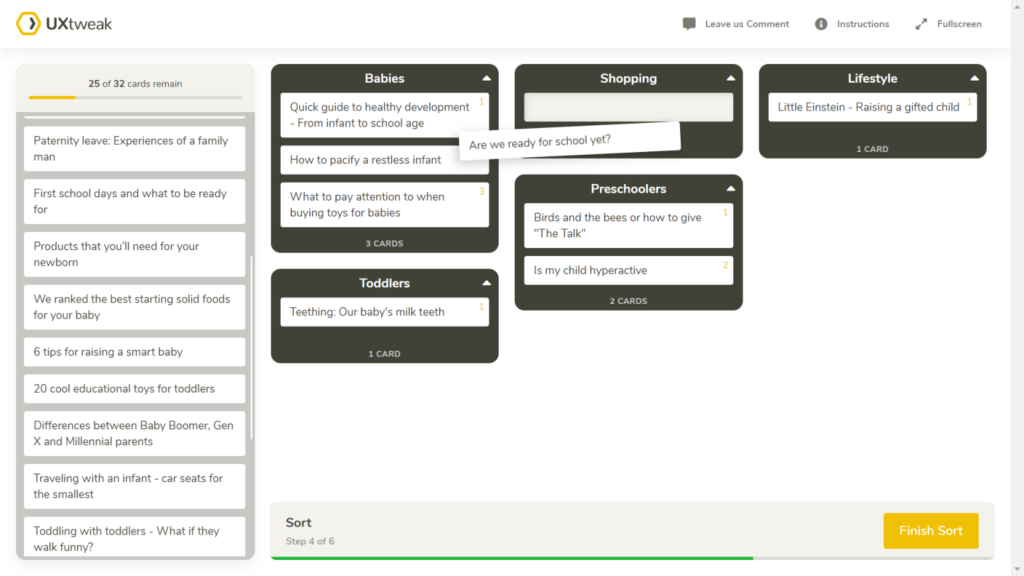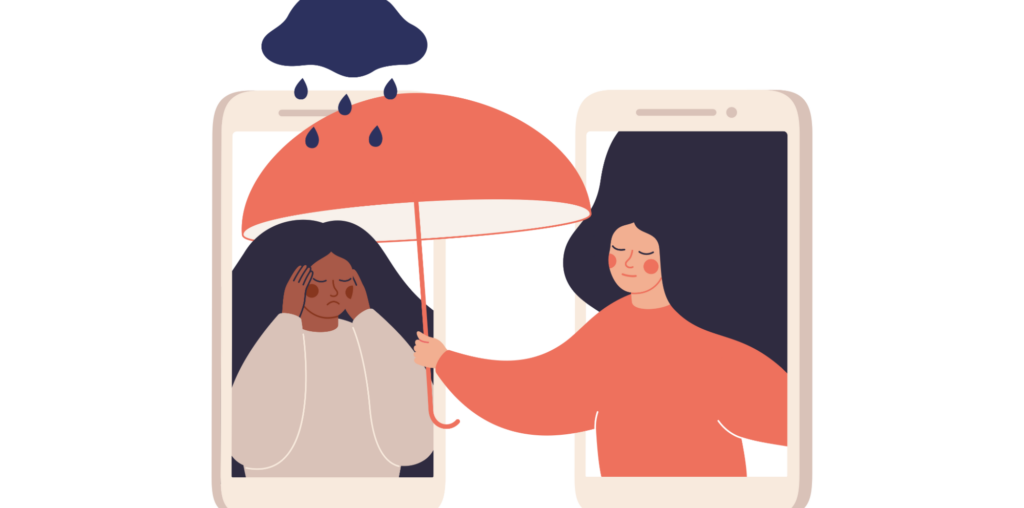Empathizing with your users creates successful products. So here are some design tools and tips to help you strengthen your user empathy and enhance your UX research.
This guide will help you know when to apply user empathy to your design process, what tools to use, and why it is beneficial to understand your users when designing products.
Empathy comes from a place of understanding — knowing what others experience, their pains, and emotions. It is more than just relating to their circumstances; empathy is seeing yourself going through those very same situations.
But how does this relate to design?
User Empathy
User empathy allows designers to “walk in their user’s shoes” and fully understand their perspectives, needs, fears, and motivations. This activity is vital to the design of innovative products.
“Empathy is at the heart of design. Without the understanding of what others see, feel, and experience, design is a pointless task.” — Tim Brown, IDEO.
The purpose of design is to either solve a problem or empower users to solve it. And unlike sympathy, empathy pushes designers to find solutions to the problems users face. This solution-seeking behavior is what makes empathy greater than sympathy in design.
According to Nielsen Norman Group, compassion is a fuller embodiment of empathy, and pity is a disconnected and abstract version of sympathy.

While design teams may not be asked to have compassion for users, empathy is certainly a requirement to build successful products.
When To Practice Empathy in the Design Process
Design teams are encouraged to have users at the forefront of the design process. However, there are points in the design process where practicing user empathy with available tools and techniques is necessary. And they can be broken down into three areas:
Empathy in UX Research
In other career fields, empathy may be a soft skill, but for UX researchers, it is a potent tool for impactful user research. User research is the first and most vital stage of building a successful product. After all, if your users are misinterpreted or misunderstood, you risk designing an entire product on wrong notions and assumptions.
User research sets the foundation for how companies and design teams understand their end-users and how they choose to design the product. Still, as humans, we are always biased in some way. So actively practicing empathy helps UX researchers put aside their point of view.
UX research methods that promote empathy like user interviews and contextual inquiry are employed at different stages of product development. With qualitative research, UX researchers move past “facts and figures” to the “why” behind users’ behaviors concerning the product.
Empathy in UX Design
Empathy is the first step in design thinking for a reason. It’s the only way to design human-centered products that solve actual needs.

The importance of empathy is summarized in this popular UX design rule of thumb: ‘You are not your user.’
This mantra became necessary in the design world because it is human nature to assume people think or react to certain things the same way you do. In fact, it is common to project behaviors, likes, and dislikes on others.
For UX designers, this could mean assuming that users understand the product the way you do. But by practicing user empathy, we have ways to prevent designing products that suit only ourselves. One of such ways is the user persona, a tool that serves as a unified source of truth across the product’s development.
In UX design, prioritizing users’ needs, motivations, and pain points is paramount. By embracing empathy in the design process, we can design effective products with seamless user flows and good UI design that improve user experience.
Empathy in UX Writing
When people use your product, they enter into a relationship of give-and-take. They give you their limited attention, and they expect to get value from you. The only way they can get this value is through effective communication – via the words within the product.
Think of it like this. You are searching for where to eat when a restaurant decor catches your eye. You step in, excited to try their food, but you can’t make heads or tails of the menu. There are so many communication issues that hinder you from getting the meal you expected. Frustrated, you get up and leave.
It is the same with digital products.
If you don’t get UX writing right, a fantastic design wouldn’t matter anymore.
Like UX design, empathy in UX writing starts with qualitative research. User experience writers consider users’ needs, motivations, and the context of use, to identify and remove any pain points users might face when using the product. It is more than just words on a screen; it is the only way users can understand the product and how to use it for their needs.
Empathy is necessary to properly guide users, communicate with them, and make their experiences seamless and productive. The fundamental rules of UX writing are to keep the copy within the product concise, clear, and consistent.
How to empathize with your end-users using tools and techniques
With an ever-increasing focus on empathy as a must-have skill in the design industry, various tools are available to help design teams empathize with users at the different stages of the design process. Let’s check out a few.
User Interviews
The best way to get to know your users is by engaging with them.
For an empathetic design, unstructured and semi-structured user interviews are preferred by UX researchers as they give users enough room for expression.
Unstructured user interviews are often conducted at the beginning of the project to get substantive qualitative data about the users, while semi-structured user interviews are usually done when prototypes have been designed so UX researchers can observe and understand how people use the product.
The golden rule when conducting user interviews is to listen to your user’s point of view no matter how different it may be from yours.
Empathy Maps
We use empathy maps at the beginning of a design project to help us break down and categorize the primary data obtained from user interviews. They visually communicate user research findings with a team, help us gain deeper insights about our users, and even build user personas.

This 5-quadrant empathy map designed by Paul Boag includes user pains and gains. It is based on the traditional empathy map that focuses on what users say, think, feel, and do when performing tasks.
Journey Maps
The journey map is another research tool that helps you empathize with your users by mapping out the series of actions they perform within the app. When drawing up the journey map, designers keep the user persona in mind and go through the journey from their point of view.
This way, designers can visualize the step-by-step interactions users have with a product and identify the pain points they encounter in the process of achieving their goals.
Journey maps are one of the best ways to ensure the user flow, design, and content align with the user’s needs at every point in time.

User Persona
The user persona is a commonly used tool to help keep your users at the forefront of the design process. It is usually a semi-fictional character based on user research, whose characteristics are representative of the common traits found among a group of user types.
User personas help design teams have a specific user in mind when designing a product. They contain information like demographic profile, goals, background, the context of use, motivation, and so on.
User personas include actual data obtained from user research to represent the ideal user.
Card Sorting
Research tools like Card Sorting help to prioritize your users when designing the information architecture of websites and apps.
Because people have different mental models, they have different expectations of how your website or app should function. Card sorting gives UX researchers a clear view into users’ minds and helps them understand how users categorize information.
There are three card sorting techniques: Open, Closed, and Hybrid. Each is used at different times and for differing reasons. They are simple and effective ways to design with empathy.

General tips to help you understand your users
In addition to design tools, there are ways we can prioritize empathy throughout the design process:
- Be aware of your biases
- Observe how users interact with products in their natural environment
- Pay attention to your users’ vocabulary. Users often make the best writers.
- Ask open-ended questions
- Hire a diverse team, and recruit a diverse group of users
- Try out the product yourself
Empathy: The key to building successful products
Though designing products to make profits is good, products that prioritize user empathy are even better. They often become game-changers like the iPod, Uber and lots of other companies did.
By understanding your users and seeing things from their perspective, you end up building valuable and profitable products that solve actual needs. You also get rid of biased assumptions early and prevent costly mistakes.
Choose Facts Over Assumptions
Naturally, we make assumptions about many things in our everyday lives – and we tend to do the same with design. We assume users think the way we do, want features we believe are great, but that is often not the case. When it comes to design, empathy that is not based on facts will mislead you.
So know who your users are, understand them, and embrace their perspectives. Time and practice will help you master empathy and build valuable products.
Where to Learn More
To learn more about the methods listed above, we highly recommend the following online courses:
If you’re just getting started in UX design, make sure you check out the free, open-source library of UX literature at the Interaction Design Foundation here.
Already a UX designer and looking to up your user research skills? Consider the specialized User Research Bootcamp. It’s a three-month, fully remote, part-time and cohort-based learning experience where you’ll interact with students from around the globe and get hands-on practice and one-on-one mentorship. You can also check out other Bootcamps on UX design here.

